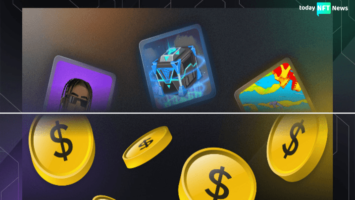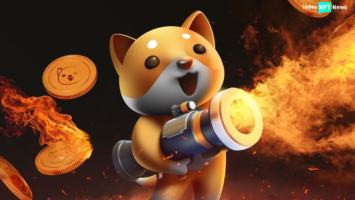Across almost every industry, the past ten years have made the world a radically different place. From the invention of certain technologies to the introduction of new ways of doing business, this has been a decade of change. Yet, some business models have seen less of a dramatic change, incorporating new technologies but then doing very little with them.
One of these industries is the music industry, which has only seen the mass movement streamlining as its major revelation of the decade. Platforms like Spotify dominate the world market, with a revenue of over $11.4 billion USD in 2021. Despite this groundbreaking revenue, over 22% larger than the previous year, Spotify still severely underpays its artists.
As a larger corporation that artists rely on to distribute their music, Spotify has all of the power. Without any leg to stand on, artists simply have to take what they’re given, with many receiving extremely reduced music streaming royalties, despite incredible streaming figures.
Across the world, technologies are continuing to grow, with one major system – blockchain – creating waves. In almost every industry, blockchain technology now has some practical impact, influencing everything from finance to healthcare. As other industries readily leap at new technology, the music industry is actively shrinking.
The simple fact is that technologies like Web 3 attempt to put the power back in the hands of the individuals, which is the opposite of what streaming services like Spotify want. In this article, we’ll examine the current adoption of Web 3 in the music industry, demonstrating how this blockchain technology is set to completely revolutionize how modern-day music works.
Let’s get right into it.
Artists Have a Tough Deal in Web 2
Web 2, our current iteration of the internet, is ruled by big corporations and the total capitalization on seemingly everything. As a business-focused world, giants like Amazon, Facebook, and Spotify have risen to incredible feats of financial success. But, much of this success comes at a cost, with employees usually taking on the brunt of the work for little of the pay.
In the music industry, this is directly seen with how little Spotify pays out to its artists. The artists and the music they create is the living and breathing core of the platform. Of course, the platform would simply not exist without the artists that create popular music. Spotify’s users come for the music and stay for the music – if there were no songs, they wouldn’t have a base of customers.
Yet, even with the complete reliance on artists that Spotify has, they pay almost nothing per song stream. Currently, while rates vary, they pay around $0.003-0.0084 per stream of a song. Yet, that is not then equally distributed, with a large bulk being siphoned back to Spotify, some to the artist’s label, to their manager, and so on.
Often, artists are left with nearly nothing from their streams. Especially considering Spotify is raking in over 11 billion USD each year, there is no excuse for them to be paying out so little. It comes back, as we find in many industries, to corporate greed.
At present, artists are unable to get what they’re worth with traditional Web 2 enterprises, with greed and a lack of respect for individuals curtailing any potential profits they could generate. Web 3, as a movement, is the direct opposite to Web 2, focusing on putting individuals first.
What is Web 3?
Web 3 is the next iteration of the internet. Since its conception in 1983, the internet has gone through several variations in order to end up where it is today. What started as a read-only service (Web 1) quickly evolved into a worldwide network where people could interact and leave comments online.
This Web 2 movement spawned social media and the tech giants that are behind it, with this being one of the most notable achievements of the Web 2 generation. Yet, this current version of the internet isn’t without its own downside. Circling back to Spotify as a reference, Web 2 gave so much power to corporations that there was little room for individuals.
As the next big step in the internet, Web 3 uses blockchain technologies to push the capabilities of this space further than ever before. Going beyond just technological differences, there is also a different focus within this new iteration. Whereas Web 2 was all about corporations and building enormous businesses, Web 3 wants to give power back to individuals.
Web 3 focuses on user-owned content, with smart contracts allowing users that post content to actually own what they create. Currently, if you were to post on Instagram, you’d lose all rights you had to that photo. Web 3, on the other hand, create smart contracts that only unlock under specific conditions that you supply. With this, you remain the primary owner of all content created, putting the power back into the hands of the individual.
When we then expand this out to the idea of creating music, NFT tracks that artists own suddenly present a very intriguing proposition for creative individuals that have been on the firing end of Web 2 for so long.
Web 3 Focusing On Providing Value To Its Audience
Web 3 places power back in the hands of the individuals, allowing music artists to have more ownership of their work, and all the surrounding production. Take the process of selling tickets for a tour as an example.
Currently, ticket sales sites act as a middle man between artists and their fans. A fan will go onto a ticket seller site to buy a ticket for a concert, then be allowed into the area. Their money essentially buys them entry, but nothing else. Alongside this not being particularly beneficial for the audience member, the middleman ticket seller also takes a portion of sales. Of course, this comes out of what the artist would earn, further damaging their total profits.
With Web 3 technologies, artists could create NFT (Non-Fungible Tokens) tickets and then sell them as unique collectibles to their audience. NFTs work on a smart contract, meaning the person that buys them is documented in the blockchain as owning this ticket. This would mean that entry to a concert would work in the same way, but the audience member would permanently have the ticket for the future.
Down the line, tickets to important concerts would become highly valuable, with fans wanting to trade tickets. As they own the NFT, fans could then start to make a profit from tickets, while still having gone to a concert. Equally, the artist themselves would be able to directly sell these NFTs, using blockchains 1-1 direct transactions. Without a middleman, this would result in much more profit from the artist. Both individuals, artist and audience member, benefit from the movement to Web 3.
Of course, the only party member that is shut out of this equation is the middlemen services, with ticket sellers and by extension, middle platforms like Spotify being unable to make any profit. This is why many Web 2 businesses are against Web 3, because the movement of power back to the individual is unfavorable for their greed.
Smart Contracts Are Becoming Even Smarter
In the above example, artists and their fans would both benefit from the production of smart contract tickets. Yet, this is not where Web 3 ends as a useful concept. Smart contracts are currently becoming even more advanced, with Boba’s Hybrid Compute functions allowing them to draw data incredibly rapidly.
Hybrid Compute allows smart contracts to poll APIs, checking millions of data points at once in a real-time fashion. When combined with the music industry, this instant checking could provide a valuable way for artists to build relationships with their users. For example, an artist could create a smart contract, with users being able to buy a song or purchase a stream for a low figure.
From there, the artist could use Hybrid Compute to check which fans have streamed the song the most, pulling data from Spotify servers. With this information, the artist could create fan tiers, with the fans that stream their music the most having exclusive perks. With this, listening time would improve as fans want to become top-rated streamers, while more profit goes directly to the artist.
Simply by streaming, audience members would have more to gain than just the music itself, reaping exclusive rewards. Simultaneously, an artist wouldn’t have to go through a Web 2 third-party like Spotify, offering their music directly to their fans as NFT tracks. With this, the artist gains all of the streaming revenue, dismantling the long period of being underpaid.
Final Thoughts
As Web 3 sweeps into technologies across the globe, it’s unsurprising that the connection between this evolving technology and the stagnant industry has now been made. Over time, we’re likely to see even more developments in this sphere, with the mutual benefit for both artists and their fans prioritizing the movement to Web 3.
With the rise of Web 3, the structures that have been underpaying talent in the music industry will be unable to do so. Over time, this movement will give more power to individuals, both artists, and fans, providing a much more beneficial sphere in which users can create and distribute their music.
Web 3, without a doubt, is set to revolutionize the music industry.









